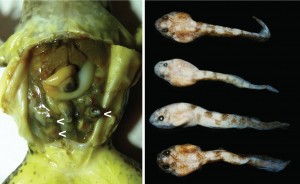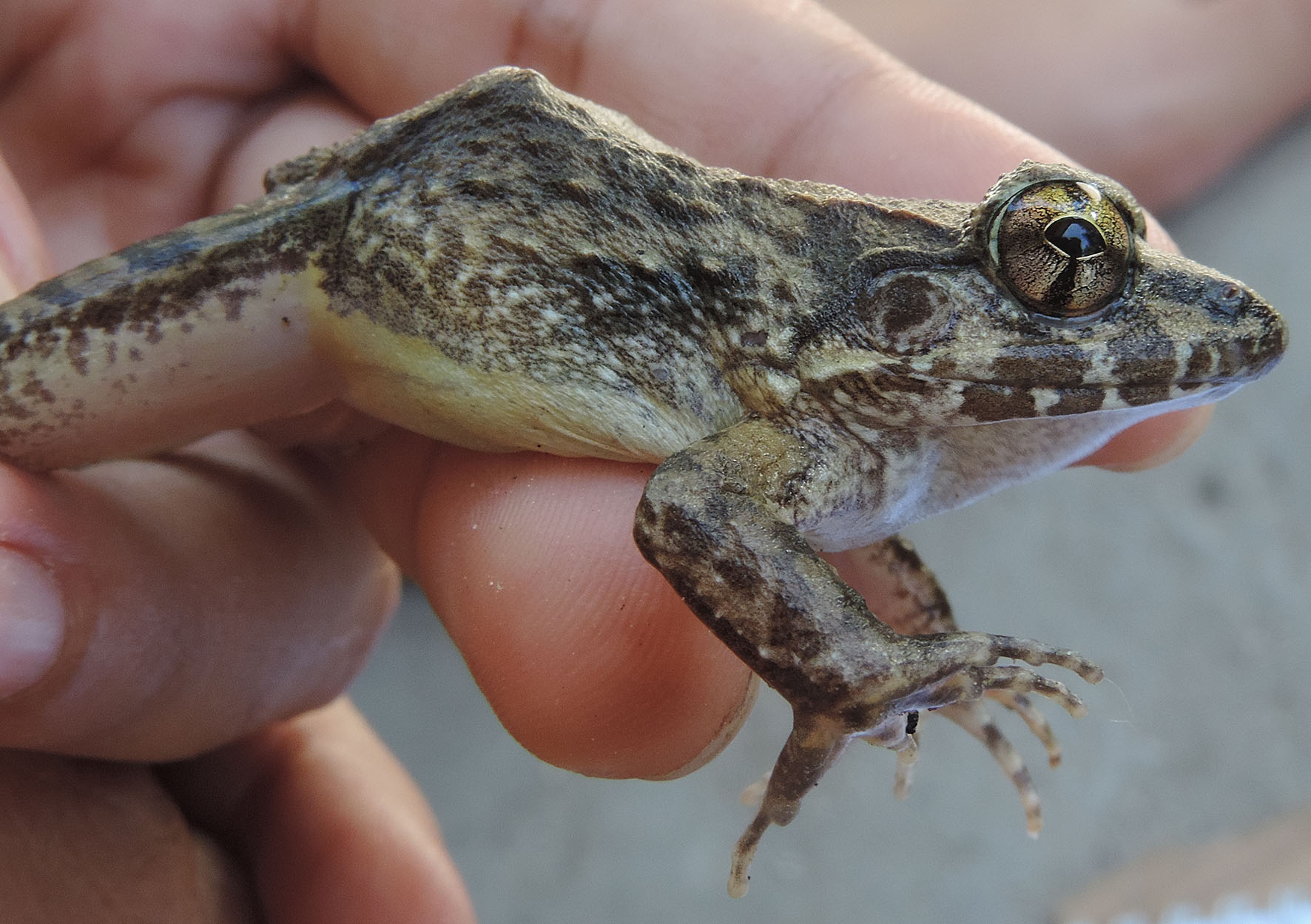
Limnonectes larvaepartus, the only known frog that gives birth to tadpoles. Photo: Fata Habibburahman
Frogs lay eggs that turn into tadpoles- that’s the rule. However, a new species of frog from Indonesia break that rule, and expands our understanding of frogs. This frog species gives birth to tadpoles!
Most of the roughly 7,000 species of frog lay eggs in water, where they are fertilized externally, hatch into tadpoles, and start feeding, then gradually develop into frogs. A small percentage of frogs are known to buck the trend and supply their young energy to grow and develop (generally in the form of yolk). Only a dozen or so have internal fertilization, but these frogs lay fertilized eggs, or tiny frogs. Until this week, we knew of no frog, anywhere in the world, that gave birth to tadpoles.
Limnonectes larvaepartus is a fanged frog (they sport ‘fangs’ on their lower jaw) from the Indonesian island of Sulawesi. The species was described and officially named only a few days ago, and its amazing ability to give birth to tadpoles was announced. Even its name reflects it’s bizzare ability, with ‘larvaepartus’ meaning “to give birth to larvae”.

Gravid Limnonectes larvaepartus with oviductal tadpoles. Left: Intact viscera of gravid female (arrows = several tadpoles). Right: four of the preserved tadpoles removed from the oviducts of the same female.
My colleagues and I look at the breeding mode of Limnonectes larvaepartus in more detail and describe its tadpole for the first time. Females of the species retain rather typical-looking tadpoles to an advanced developmental stage (at least Gosner Stage 25) in their oviducts. When you look at ‘pregnant’ female of the species, you can actually see the tadpoles wriggling inside her. And that’s not surprising given how many tadpoles they can actually hold- in one female, we recorded over 100 tadpoles, tightly packed in each oviduct. These tadpoles don’t appear to have enough yolk to last them until metamorphosis inside their mother, and so we don’t think they have the option to stay inside their mother until they are more developed (and it’s unlikely they would fit if they were much bigger!). Larger, more developed tadpoles were found swimming in pools and slow-flowing streams near adults of the species.
Female Limnonectes larvaepartus are unique in the frog world in that they release their young into streams as well-developed, typical, free-living tadpoles. This is a reproductive novelty and emphasises just how little we know about frogs overall. It also highlights how much remains to be discovered from the imperiled forests of Southeast Asia.

This stream is home to Limnonectes larvaepartus- the frog that gives birth to tadpoles. Photo: Luna Raftika Khairunisa
More information:
Kusrini, M.D., Rowley, J.J.L., Khairunnisa, L.R., Shea, G.M. & Altig, R. (2015) The reproductive biology and larvae of the first tadpole-bearing frog, Limnonectes larvaepartus. PLoS ONE 10(1): e116154.
Iskandar DT, Evans BJ, McGuire JA (2014) A Novel Reproductive Mode in Frogs: A New Species of Fanged Frog with Internal Fertilization and Birth of Tadpoles. PLoS ONE 9(12): e115884.
This work would not have been possible without the generous support of ADM Capital Foundation. We also thank J. McGuire, A. Hamidy and E. Arida from the Museum Zoologicum Bogoriense, A. P. Kartono from the Faculty of Forestry at the Bogor Agricultural University, the North Sulawesi Forestry Office (BKSDA Sulawesi Utara) in Manado and A. Nusantara, N. T. Ayuningrum and F. H. Faz.

